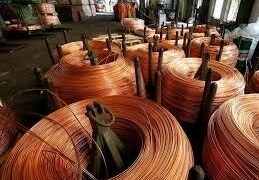Investing.com – Crude oil prices settled higher on Tuesday as Saudi Arabia vowed to end the glut in supply while data expected to show crude oil supplies fell for the fifth-straight week lifted sentiment.
On the New York Mercantile Exchange for December delivery rose 1.1% to settle at $52.47 a barrel, while on London’s Intercontinental Exchange, added 1.52% to trade at $58.33 a barrel
In what was a volatile day of trade, traders weighed the prospect of an extension to the supply-cut agreement after Saudi oil minister Kalid al-Falih said Saudi Arabia is willing to “do whatever it takes” to rein in excess supplies,
“When we get closer to that (five-year average) we will decide how we smoothly exit the current arrangement, maybe go to a different arrangement to keep supply and demand closely balanced so we don’t have a return to higher inventories,” the minister, Khalid al-Falih, told Reuters.
In May, Opec producers agreed to extend production cuts for a period of nine months until March, but stuck to production cuts of 1.2 million bpd agreed in November last year.
The ongoing fluctuation of output in Iraq, meanwhile, continued to concern investors as crude supplies through Iraq’s northern pipeline to Ceyhan in Turkey rose further. Pumping along the pipeline rose to 300,000 barrels per day (bpd) on Tuesday, Reuters reported, citing a shipping source.
The uptick in political tensions in Northern Iraq follows conflict between Iraqi and Kurdish forces last week, as Kurdish forces retreated from Northern parts of Iraq, ceding control of two major oilfields.
In the U.S., traders turned attention to inventory data from the American Petroleum Institute on Tuesday as well as a further report from EIA on Wednesday expected to show a for the fifth-straight week.
Fusion Media or anyone involved with Fusion Media will not accept any liability for loss or damage as a result of reliance on the information including data, quotes, charts and buy/sell signals contained within this website. Please be fully informed regarding the risks and costs associated with trading the financial markets, it is one of the riskiest investment forms possible.
Source: Investing.com




























